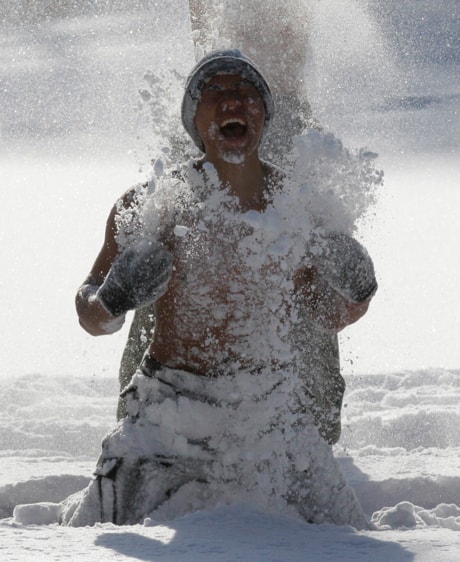Was the Arctic chill that swept much of the country this December your worst enemy, occasion to add layers, turn up thermostats and pile on the blankets? Or is brisk air something you shrug off with a light jacket and maybe some earmuffs?
Most doctors say a person’s sensitivity to cold is genetic -- not that there is a specific thermostat gene -- but that various traits guiding metabolism, fitness, brain and nervous system function, sleep habits, plus gender, age and body fat, all play a role in how we react to cold or heat.
Scientists know that a structure at the base of the brain — the hypothalamus — is the body’s thermal control center. Assorted nerve-signaling chemicals from various parts of the body report in to the control center that temperatures are dipping or soaring well out of the normal 36 to 37.2 degree Celsius range.
That prompts blood vessels near the skin’s surface to either open up and release heat or close down and conserve heat for the vital organs. That usually leaves hands, noses and feet feeling even colder. If the core temperature gets really low, the brain instructs our muscles to contract and shiver to increase the internal production of heat. But muscles can only do this for so long before becoming exhausted and hypothermia begins.
There’s also evidence that this system can be short-circuited. Researchers at the University of Florida reported in 2004 that some nerve cell receptors located near the spinal cord can be activated by chemical signals that aren’t linked to temperature.
They said this process could explain why hormone surges during women’s menstrual cycles and menopause, as well as from depression and even perhaps fevers, can make them feel alternately chilled or overheated even when there’s no major change in their environment.
It’s less clear whether getting cold actually facilitates the onset of illness. A few experiments have found some connection to “getting chilled” and getting sick, but other researchers say the cold that drives us indoors into crowded quarters and makes our noses more apt to pick up viruses is more to blame than actual temperatures. However, the jury is still out on whether people who are more sensitive to cold may have inherently weaker immune systems.
That’s certainly true for the very young and the elderly. Both groups are also at risk for cold and heat injury because their nervous systems are not fully mature or, for the elderly, in decline, which means they may have to wear more layers to stay warm and require more attention from caregivers when temperatures get extreme.
Otherwise, most healthy people who seem to feel the winter’s chill excessively are simply naturally programmed that way. “It’s just how they are and there’s nothing wrong with them,” said Dr. Brian Reed, a family and community medicine expert at Baylor College of Medicine in Houston.
But Reed said some health conditions might need to be ruled out with lab tests when a patient comes in with a recently developed cold intolerance, rather than lifetime tendencies.
An underactive thyroid can slow down metabolism and cause the body to produce less heat. And occasionally, a disorder of the pituitary gland, which controls hormones, can disrupt thermal controls. On the other side, an overactive thyroid or excess body weight can make a person feel too warm much of the time.
Anemia, a condition in which the body doesn’t make enough red blood cells, is one of several disorders and diseases of the blood that can make a person feel constantly cold.
There’s also Raynaud’s disease, an arthritis-related condition that causes fingers and toes to turn blue in response to cold, but also sometimes from emotional stress. There’s usually some pain or numbness in the hands, but when blood flow recovers, the area gets red and tingles or throbs.
People who have very low body weight, perhaps as a result of an eating disorder or a radical change in diet, tend to be more susceptible to cold as well.
